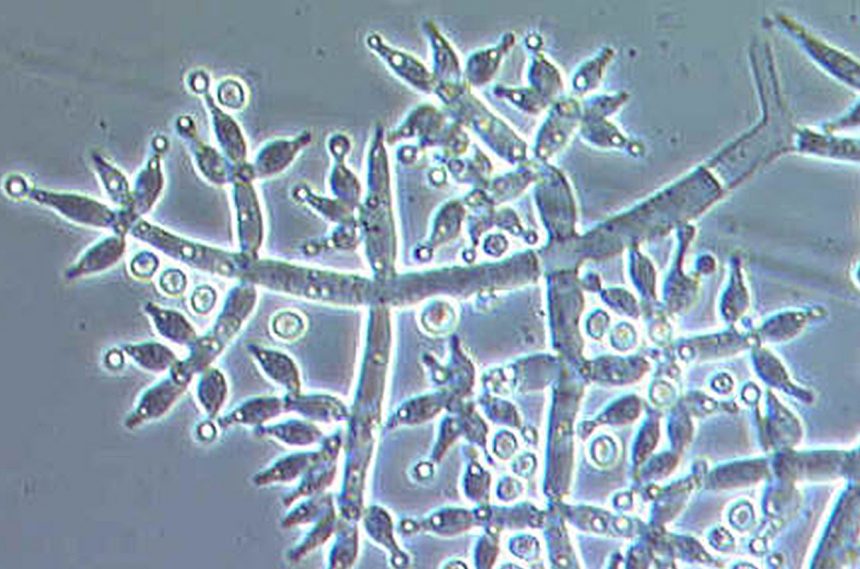
When exposed to static for 30 minutes daily, the fungal soil microbe Trichoderma harzianum, pictured here, grew more massive and produced more spores than microbes kept in silence. U.S. Department of Agriculture/Agricultural Research Service/Systematic Botany and Mycology Laboratory via Wikimedia Commons
Medical marijuana growers swear by it: the idea that music from various styles enhances the growth of their plants. This concept harkens back to the 80s when parents played Mozart to their embryos for purported benefits.
Research now suggests there may be truth to it:
Scientists have found that soil microbes thrive when exposed to white noise. Fungal soil microbes known to promote plant growth appear to benefit from white noise stimulation. Researchers liken the effect to hosting an underground rave for these beneficial microorganisms.

Members of the Flinders ecoacoustics team listening to soil. Photo and animation by Traci Klarenbeek (Flinders University).
Experiments showed that when a noise resembling radio static was intermittently played to Trichoderma harzianum fungi, they exhibited increased growth and spore production compared to samples grown in a soundproof environment. Researchers speculate that the vibrations may stimulate mechanoreceptors in the fungi’s cell walls, leading to changes in gene expression related to growth.
Barely perceptible to human ears, healthy soils emit a symphony of sounds, akin to an underground concert of bubbles and clicks.
Special recordings by ecologists at Flinders University in Australia reveal that this diverse soundscape can indicate the presence of a variety of small organisms in the soil, generating sounds as they move and interact in their environment.
 With 75% of the world’s soils degraded, the future of the underground ecosystem faces severe consequences without restoration, warns microbial ecologist Dr. Jake Robinson from Flinders University.
With 75% of the world’s soils degraded, the future of the underground ecosystem faces severe consequences without restoration, warns microbial ecologist Dr. Jake Robinson from Flinders University.
This new research field aims to explore the hidden ecosystems where a large portion of Earth’s species reside.
“Maintaining and monitoring soil biodiversity is crucial,” says Dr. Robinson. “Eco-acoustics is emerging as a promising tool to detect and monitor soil biodiversity and has been utilized in various ecosystems around the world.”
Research shows that restored and protected areas exhibit higher acoustic complexity and diversity, correlating with soil invertebrate abundance and diversity.
The importance of soil biodiversity cannot be understated, and efforts are needed to protect and restore these vital ecosystems.
In Israel, a pioneering team has even demonstrated that plants have their own way of communication.
Comments






